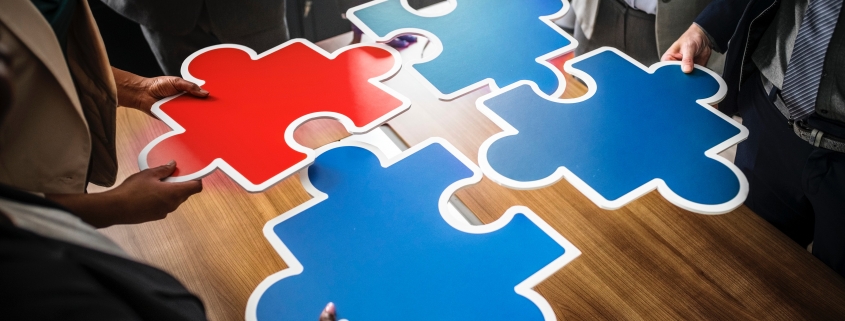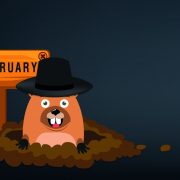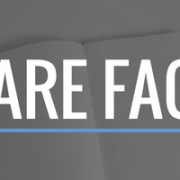BARE Shares – How to Keep Unconscious Bias from Sabotaging Customer Experience Success
‘Is unconscious bias impacting your CX programs and initiatives? Yes, it probably is. Thankfully, it’s not as difficult to overcome as you think.’ BARE shares an article by Krista Sheridan for Customer Think on How to Keep Unconscious Bias from Sabotaging Customer Experience Success.
‘This morning you likely did a bunch of things: woke up, had breakfast, maybe took care of children or pets, got dressed, made your way to work, and so forth. And for each of these activities – although technically you had endless options (will breakfast be cereal? Salad? Cake?) – chances are you didn’t run through each of them, weigh them carefully, and then make a choice. It was likely already a done deal. Automatic.
With the amount of information coming at you and the number of choices you have to make on a daily basis, your brain helps you out with some mental shortcuts so you can feel less overwhelmed and get things done faster. It has some things pre-loaded. For example, toast is for breakfast, flip-flops are for the weekend, and PJs, while comfortable, aren’t a great choice for a gala.
These shortcuts are also called “biases”, and your brain is wired to leverage them.
The word “bias” typically has a negative connotation, but it shouldn’t. Biases can be helpful, like when you’re trying to get out of the house in the morning or get home from work (subway yes…camel no).
Biases can become a problem when we rely on them for bigger, more important decisions, essentially relying on unconscious assumptions or our “autopilot” setting, instead of being thoughtful. Biases can blind us to new information or get in the way of us considering valuable, alternative options when we’re making an important decision.
Just to make things trickier, it’s difficult if not impossible to catch yourself making these unconscious or auto-pilot decisions, because they are just that – unconscious. The good news, however, is that you can change how you work to help mitigate negative impacts.
Isn’t Unconscious Bias Just an HR Thing?
Nope. It’s not an “HR thing”. It’s an “everybody thing” because it’s a brain thing.
It’s not about being a “good” person or a “bad” person, it’s about understanding how our brains work, and how that impacts what we do, the decisions we make, and the relationships we forge.
At TELUS, we’re spending time learning about what bias is and how each of us can take concrete steps every day to make better and more informed decisions that support our culture and purpose.
Unconscious bias matters for all kinds of reasons, but a big one is that if left unchecked, bias can squash innovation. It can keep you from including different ideas and points of view and from trying new things, all without you even realizing it.
Here are two commons biases and some ways to overcome them:
1. Similarity Bias
Our brains are wired to categorize and organize things. One thing we categorize is people – in particular, whether people are like us, or not like us – vestiges from a time when making the mistake of trying to hang out with a saber-tooth tiger instead of your family could be the last thing you do! We can be unconsciously motivated to seek out and spend more time with people like us – “like us” meaning the same type of role, hobbies, focus, style of dress, way of thinking, etc.
What does this mean for CX?
In the CX arena, this can mean you inadvertently end up working with the same cast of characters over and over. It’s easy and it feels comfortable. You feel like you’re on the same page. Conversations are effortless. You reach agreement quickly.
But you’re probably not getting the variety of inputs you need to get the innovative or breakthrough ideas you want. You’re probably not really kicking the tires and challenging your thinking of what is possible.
So what can you do?
- With a team: Check out your team representation – does it include people from all steps of the customer journey from awareness to consideration, to purchase, to support? Or is it a cozy group of people who “get you”? Branch out. Include representation from the full journey. And if you’re feeling brave, invite those people who tend to disagree with you. They will have different ideas and ways of thinking.
- On your own: Assess your advice circle. At a recent TELUS leadership forum, Harvard Professor Francesca Gino shared the following exercise:
- Note down the name of 5-10 people you typically go to for advice.
- Now, give them a score of 1-5, where 5 is “a lot like me” and 1 is “not at all like me”.
- Take the average. That is your score.
Score = 1-3: Looks like you tend to work with people who think differently. Great!
Score = 4-5: Looks like you could use some variety. Look for more people less like you to ask for advice. They don’t have to be people who actively disagree with you (although they are likely a treasure trove of different thinking!). Consider people who do a different job, or tend to work/think differently. For example, people who compared to you are more (or less): analytical, social, process driven, creative, skeptical etc.
2. Risk Aversion Bias
You may also hear this talked about as “loss aversion bias” (bad outcomes have more weight than good). Our brains like to keep us safe (again, a vestige from the days when being chased by a saber-tooth tiger was still a likely event!) so our detection systems (unconscious of course!) for risk are more sensitive than the ones that gauge reward or positive outcomes. It’s not your imagination, you are wired to pay more attention to the negative things. They are more attention-grabbing to your brain.
What does this mean for CX?
It means those big bold ideas that would help you leapfrog past your competition and into the “head and shoulders above everyone else” category are more likely to be shelved in favour of less ambitious “sure bets”.
The fear of things not working out can also keep you doing what you’ve always been doing (just this time in purple or maybe with balloons) and eventually perhaps take you out of the race.
So what can you do?
- Break things down into smaller chunks. If the bold move you’re after will take 2+years and cost millions of dollars, break it down into smaller chunks like a quarterly view or whatever it takes to make each step small enough that any unexpected outcomes are more easily managed. This approach is helpful for presenting new ideas to any of your stakeholder groups, as well. They don’t have to commit to one large resourcing or budget ask, but smaller more manageable ones.
- Watch your language. There is a lot of talk about the value of “failing fast”, however, the word itself makes people uneasy. But, if you’re going to be innovative, you’re going to need to try new things, and you’ll likely have to try a lot before you land on something that works. So consider using language that encourages experimentation.
Using the language of experimentation can help you reduce the feelings of risk, so you can get better at trying new ideas, and that will help you become more innovative. It’s not about arguing points of view and then hoping you’re right, but testing things out in small chunks, meeting regularly, and keeping the ideas going.
So, if you haven’t already, take some steps to reduce bias in your CX programs and initiatives. You’ll include more people, more ideas, and create an engaging, innovative CX culture where you’re always pushing the envelope – together.‘ BARE International was born from the need for mystery customer research at the national and global level. BARE’s customer experience research can provide you with critical data to make meaningful business decisions. Ask us how.
Read the full article at the source here.
Customer Experience Research & Insights by BARE International
Your business challenges are unique. Our proven success across industry categories stems from asking the right questions to help you address the challenges you face everyday. Each solution we offer is customized to meet your needs, providing actionable feedback to help you make critical business decisions. We treat you the way you want to treat your own customers, providing a dedicated project team to give you the attention you deserve and an infrastructure spanning the globe to provide the resources you need to understand your customers’ experiences.
- Customized Research Solutions
- Immediate, Actionable Feedback
- Dedicated Project Team
- Family-Owned, Global Capabilities
Get in touch today to receive a complimentary evaluation of your business. We look forward to working with you.











